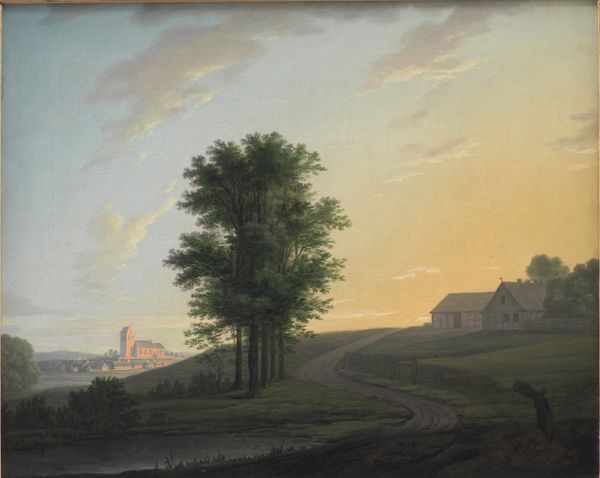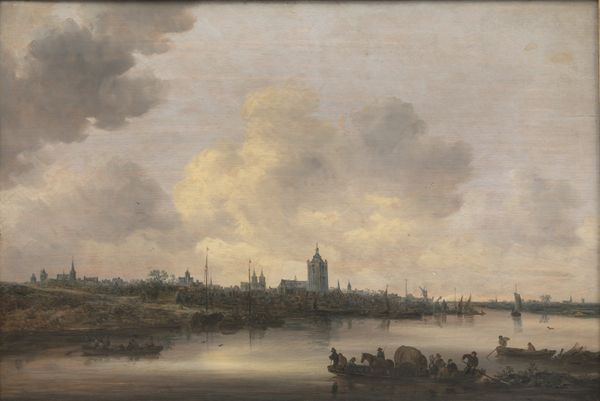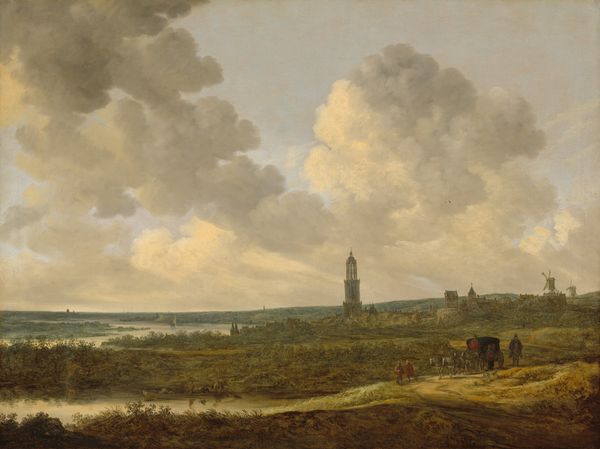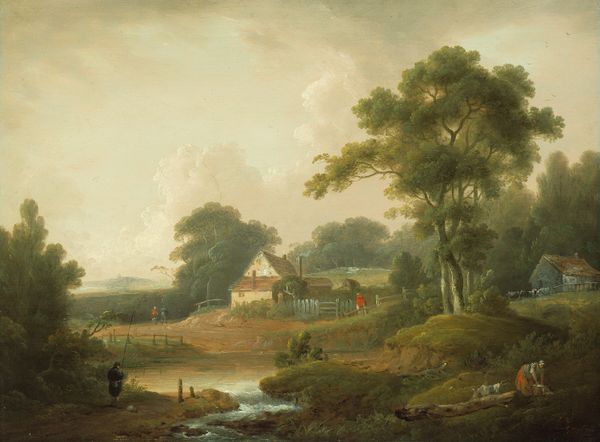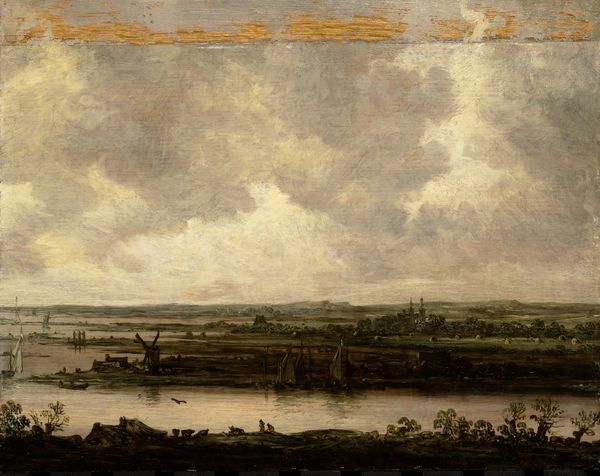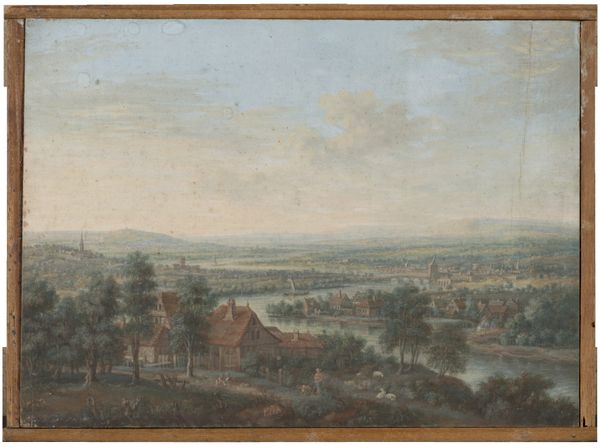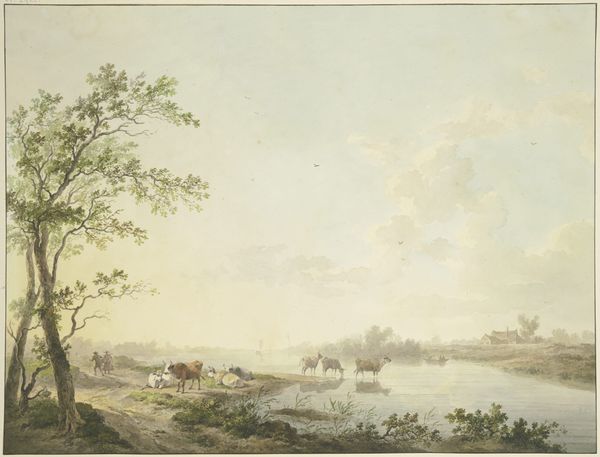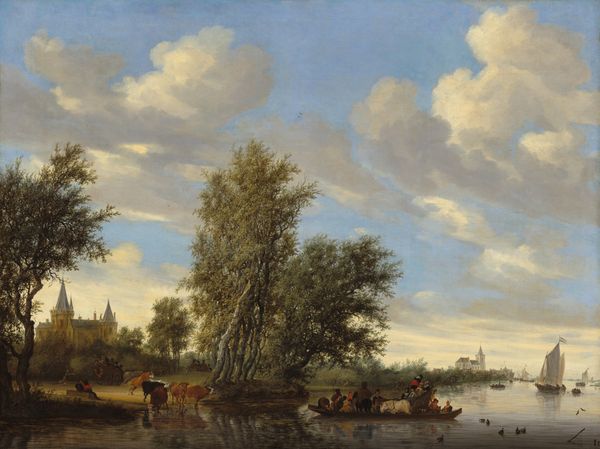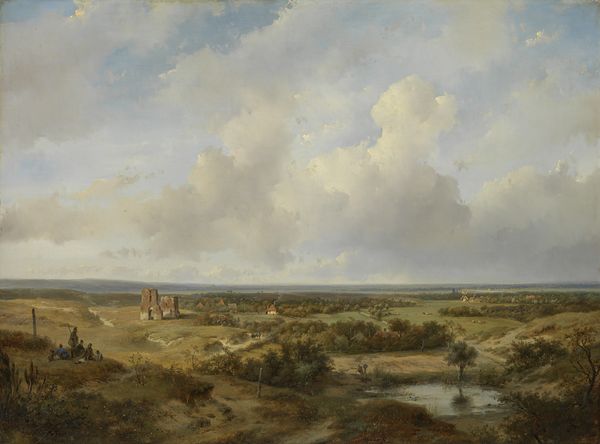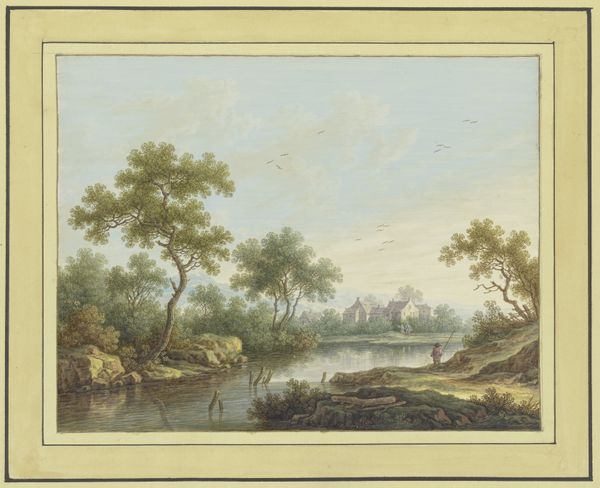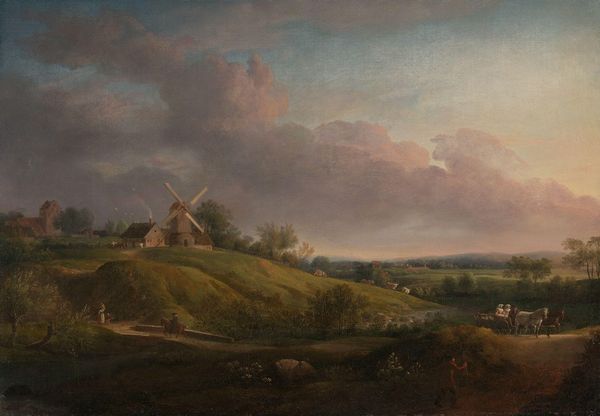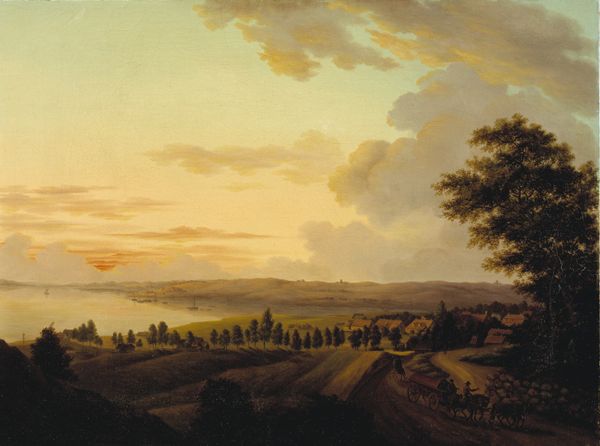
painting, plein-air, oil-paint
#
painting
#
plein-air
#
oil-paint
#
landscape
#
oil painting
#
romanticism
#
cityscape
#
genre-painting
Dimensions: 62.5 cm (height) x 83.5 cm (width) (Netto)
Editor: This is Heinrich Grosch's "Prospekt af Vordingborg," painted in 1810, using oil on canvas. It's a landscape with soft, almost pastel colors. The textures seem very smooth. What strikes me is the calm it evokes. What's your take? Curator: It’s interesting to consider the physical conditions of this ‘plein-air’ oil painting, its means of production and where the artist located to paint. Do you see how the soft pastel color palette wasn’t simply aesthetic choice but indicative of the available pigments at the time, sourced locally from minerals and plants? Think about how this access or lack thereof directly influences the work. Editor: That’s a great point. The limited pigment range impacts the whole feel. So, what about the scene itself? Is there anything materialist to consider there? Curator: Definitely. It portrays Vordingborg, not just as a pretty view but as a site of industry and labor. How the labor interacts with land. See the workers going about their day alongside cattle grazing? Also note how boats are integral part of painting: how the materials for ships connect with global trade. This artwork thus becomes a document, revealing how materials shaped people's lives and how that informs Danish national identity during that era. Editor: That makes me consider who the artwork was intended for – possibly a patron invested in these local industries? Curator: Exactly! Think of the social implications – it validates and celebrates the everyday work of local populations, simultaneously romanticizing it to the upper class. Do you see this play between lived reality and curated idealism through a materialistic lens? Editor: Absolutely. I hadn't considered how deeply interwoven the materials and labor were with the message. I’ll look at landscapes very differently from now on! Curator: Yes. Thinking about art materialistically helps us break free from just formal beauty and enter a realm of social and historical analysis.
Comments
No comments
Be the first to comment and join the conversation on the ultimate creative platform.
